Achalasia Awareness Month
September is Achalasia Awareness Month, which aims to bring awareness and understanding to the rare, incurable disease. Achalasia Awareness Month was started by the Achalasia Awareness Organization as a grassroots effort to educate and motivate the public around the disease. Below, we discuss how to bring awareness to Achalasia both in September and year-round.
What is Achalasia?
First, it’s important to understand what Achalasia is since education is at the forefront of motivation to action and awareness around the disease. Achalasia is a rare esophageal disorder that prevents the esophagus from emptying properly. In patients with Achalasia certain nerve fibers in the esophagus are destroyed, which causes the esophagus to become unable to swallow and prevents the lower esophageal sphincter from relaxing properly to allow food into the stomach.
Achalasia is often referred to as the opposite condition of GERD. Whereas people with GERD suffer from a weakened lower esophageal sphincter, patients with Achalasia have an excessively tight lower esophageal sphincter. Both conditions are a source of serious issues for the patients who have them.
Symptoms of Achalasia
People who suffer from Achalasia may experience any number of symptoms, but the most common Achalasia symptoms include:
• Dysphagia (difficulty swallowing)
• Chest pain
• Regurgitation
• Heartburn
• Weight loss
Treatment for Achalasia
While Achalasia is a lifelong, incurable disease, there are a number of treatment options available to minimize the symptoms of Achalasia. Although you should speak with an Achalasia doctor to determine the best course of treatment for your specific needs, these are some of the most common achalasia treatments.
Medication
There are a few medications available that are designed to help relax the LES, but most are fairly ineffective. Medications for Achalasia would also need to be taken for life.
Balloon Dilation
Balloon dilation is currently considered the most effective non-surgical treatment for people with Achalasia who aren’t candidates for surgery. In this treatment, a balloon is placed through the mouth and down to the lower esophageal sphincter (LES). The balloon inflates and works to weaken the tight LES valve. Balloon dilations are not as effective at providing long-term relief as surgery but can provide relief and improvement in swallowing.
Surgery
The surgery used to treat Achalasia is called Heller myotomy—a laparoscopic procedure that involves cutting the muscle of the LES to loosen it and allow food to pass. During the procedure, the LES is then partially rebuilt to prevent reflux from occurring post-surgery. Surgery has proven to be the most successful long-term treatment method for Achalasia, and most patients notice improvement in swallowing almost immediately.
How can I get involved in Achalasia Awareness Month?
There are several ways to get involved in Achalasia Awareness Month. The easiest thing you can do is to donate to the cause. This is an easy way to show your support if you don’t have time to spare. Another way is attending an organized event whether it’s a breakfast, a 5K, or a speaking engagement. If there aren’t any events near you, contact the Achalasia Awareness Organization to see if you can organize an event in your area. Lastly, you can simply be a voice for the cause, educating others on Achalasia and its impacts.
